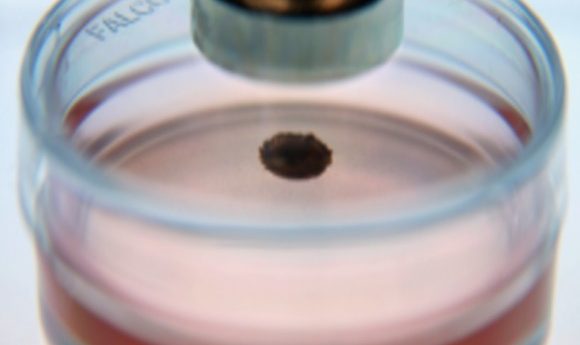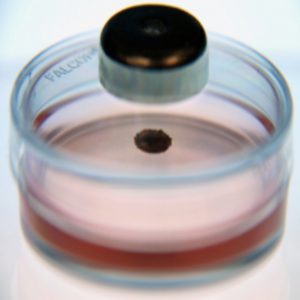Bringing cell culture to space

NASA is shipping a new magnetized platform to space to gather insight about the best 3-D cell culture techniques for scientists.

Credit: Nano3D Biosciences, Inc.
Biologists grow cells in vitro to shed light on how they function in our bodies. But 2-D culture alters gene expression, protein production, and overall cells behavior compared to in vivo conditions; thus, 2-D culture can jeopardize the therapeutic relevance of in vitro findings. To overcome these limitations, researchers are developing various contraptions to better mimic cells’ natural 3-D environment.
Glauco Souza, president and chief scientific officer of Nano3D Biosciences, helped develop one of the more exciting 3-D culture advances: magnetic levitation (1). While developing the technology, he built increasingly complex assemblages of magnetic nanoparticles and soon realized that he could directly manipulate cells in vitro if he could make them take up the magnetic particles.
The system he developed relies on combining a gold-based hydrogel with magnetic iron oxide nanoparticles as a substrate for seeding different cell types. When added to this platform, cells readily take up charged nanoparticles. Following application of a magnetic field, they levitate and interact with one another in 3-D as they would in organs or tumors (2). The platform grants researchers greater flexibility for tailoring cell–cell interactions in 3-D.
Building on this technology, Souza and a team at BioServe Space Technologies recently submitted a proposal to the Center for the Advancement of Science in Space to study magnetic levitation in space (3). Their goal is to tease apart the role of gravity from that of substrate adherence in cell growth and function.
Cells spontaneously grow in 3-D uncer zero gravity, but they are much harder to manipulate. “We thought that we could use magnetism to solve a whole set of problems encountered in space,” Souza said. He will soon find out, since NASA is beginning experiments for this project aboard the International Space Station (ISS) in less than 2 weeks.
Beyond improving in vitro 3-D culture methods in the ISS, Souza expects these experiments to shed light on laboratory practices back on Earth. “From the point of view of applying a novel biotechnique, we want to know if there’s something that we’ll find in space that’s going to help us down here.”